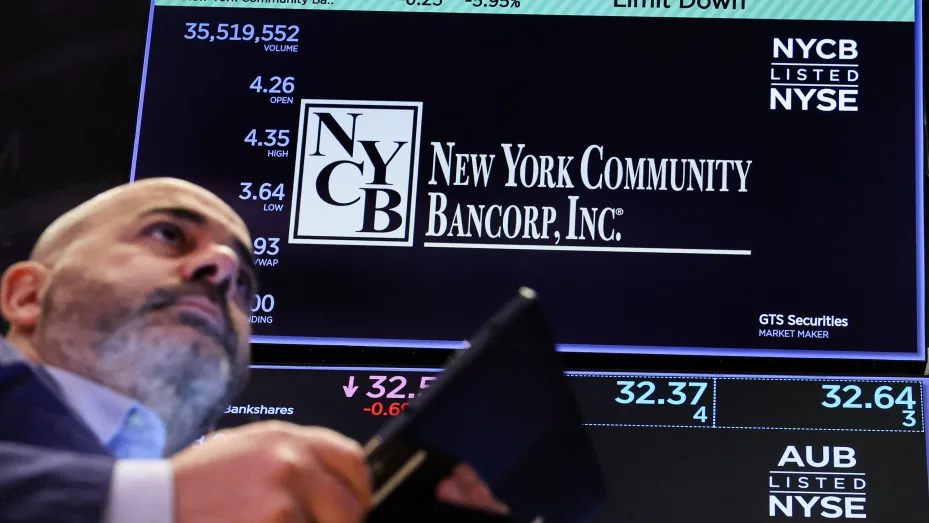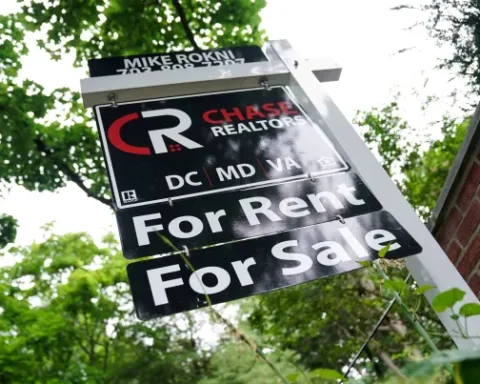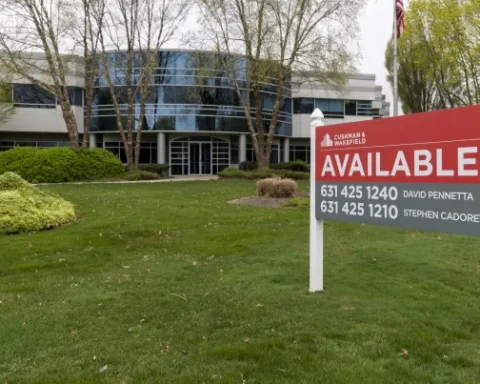As the anniversary of last March’s banking crisis looms, the financial community is casting a wary eye on New York Community Bank (NYCB), whose recent troubles have reignited concerns over the stability of mid-sized American banks. Despite efforts to reassure investors by disclosing various financial metrics, NYCB’s struggle to maintain confidence has become increasingly apparent. The bank’s late Tuesday announcement that deposits remained stable at $83 billion and its capacity to manage potential uninsured deposit withdrawals did little to alleviate worries, particularly as it coincided with a management reshuffle that saw chairman Alessandro DiNello assuming a more direct role.
The bank’s share price experienced a fleeting 6% recovery following these announcements, barely making a dent in the over 50% plunge that followed its disappointing fourth-quarter results. This volatility was compounded by Moody’s recent downgrade of NYCB’s credit rating to junk status, spotlighting the bank’s risk management challenges amid its executive search. Furthermore, a shareholder lawsuit alleging misinformation about the bank’s real estate holdings adds to the growing mistrust in NYCB’s management, encapsulated by Ben Emons from NewEdge Wealth’s observation, “There’s a confidence crisis here… The market doesn’t believe in this management.”
NYCB’s predicament is symptomatic of broader concerns in the banking sector, particularly around the $2.7 trillion in commercial real estate loans held by banks. Fears of a repeat of last year’s turmoil, triggered by deposit runs at Silicon Valley Bank and Signature Bank, are mounting. NYCB’s unexpected need to set aside a substantial $552 million for potential real estate loan losses—over ten times what analysts predicted—has raised alarms, further exacerbated by its decision to cut dividends by 71% to conserve capital.
This unsettling news has affected NYCB and sent ripples through the market, dragging down shares of other regional banks heavily invested in commercial real estate. The sector is reeling from the dual threats of potential defaults and a shifting landscape, where office spaces face heightened risks due to evolving work models and regulatory changes impacting property values in New York.
As institutions brace for what might come, the market’s response—highlighted by a spike in speculative trades against NYCB—signals deepening concerns. Even with Treasury Secretary Janet Yellen’s assurance that the situation is “manageable,” the acknowledgment of “some institutions that are quite stressed” underscores the precarious balance the banking sector must maintain in navigating these challenges.
NYCB’s ongoing struggles reflect an individual institution’s woes and a broader systemic unease within the banking sector, especially among mid-sized banks with significant exposure to commercial real estate. As regulatory bodies and analysts advocate for stricter reserving practices in the wake of NYCB’s issues, the industry stands at a crossroads, with the potential for further disruptions looming significantly.







